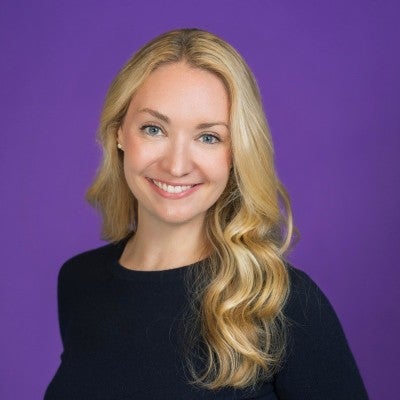P&G is driving growth with what it terms “constructive disruption” with a focus on constant innovation and irresistible brand experiences that result in growing the market, new users, share, sales and profit.
“Constructive is a carefully chosen word,”P&G Chief Brand Officer Marc Pritchard said. “There’s more of that happening at P&G. It’s one thing to disrupt and destroy value, but our job is to disrupt in a way that drives growth and creates value.”
Pritchard shared P&G’s construction disruption roadmap today at the ANA Masters Marketing Week conference.
For example, Tide merged the ad world with the creative worlds of entertainment and sports for an entertainment series that ran over the last four weeks during Sunday Night Football.
“Were those ads? Not in the traditional sense, because we know we operate in a perpetual state of disruption,” he said.
After years of higher digital media spending with little visibility, and calling for industry-wide digital media transparency, the company reduced wasteful spending and reinvested into better performing media.
P&G is also calling for control over content quality like moderation of editorial comments to eliminate hateful and toxic speech that hijacks conversations; common consumer privacy standards; and data transparency across media platforms to stop excess ad frequency that annoys consumers and wastes marketing and advertising dollars.
“Those who meet these standards will be preferred providers and will be first in line for investment,” Pritchard said.
Reinventing brand building
P&G created its own database of more than 1.5 billion consumer IDs, covering 50 percent of people online and rapidly increasing. To meet disruptive startups head on, P&G now has more than 180 startups of its own that are transforming how it innovates through lean innovation.
“We’re reinventing media, moving from mass blasting with a lot of waste to mass reach with one-to-one precision through data, analytics and digital technology,” he said.
P&G’s consumer database enables advanced programmatic media buying that finds people with the highest propensity to buy. China is the company’s most sophisticated market with 80 percent of digital media bought this way. Last year, they reduced 30 percent in digital media waste and increased the number of people reached by 50 percent.
The consumer database also enables moving from generic audiences to smart audiences. For example, last year Olay used smart audiences to reach 65 million high potential users, more than the generic audience of “women ages 25-54,” and spent 10 percent less with 20 percent higher sales growth.
Other articles you might enjoy:
- Avon Wipes Clean Its Marketing Playbook with a Fresh Makeover
- How Target Got its Mojo—and Revenue—Back on Track
- Dewar’s Plan to Recruit New Customers
Data enables greater TV effectiveness and efficiency and it is doubling down to communicate how P&G products are superior.
Educational infomercials educate about product use and benefits, like one for Mr. Clean, and ads are created to be more interesting by merging ads with other creative worlds like comedy and music.
“This is leading to entirely new creative partnerships merging the ad world with the film, music, comedy, sports and journalism worlds to reimagine brand creativity in a way that is authentic, engaging, and that people enjoy,” Pritchard said.
For example, a partnership with Queen Latifah and Tribeca Studios created The Queen Collective premiering two documentary films at TribecaX from B’Monet and Haley Elizabeth Anderson highlighting important social issues, with accompanying stories from Olay, My Black is Beautiful, and Tide.
And just launched is a six-episode series called ACTIVATE in 172 countries—a unique partnership with National Geographic and Global Citizen that tells inspiring stories of efforts to eliminate extreme poverty, with the actions of Always, Head & Shoulders, Tide, Charmin, and P&G organically integrated.
“We’re on the edge of one of the greatest revolutions of creativity the ad world has ever seen; leading us into a world without ads as we know them today through the intersection of multiple genres that create stories never experienced before,” he said. “We’re disrupting the definition of the ‘world’s largest advertiser.’ It’s not who spends the most, it’s who reaches the most people efficiently and effectively to drive growth.”



